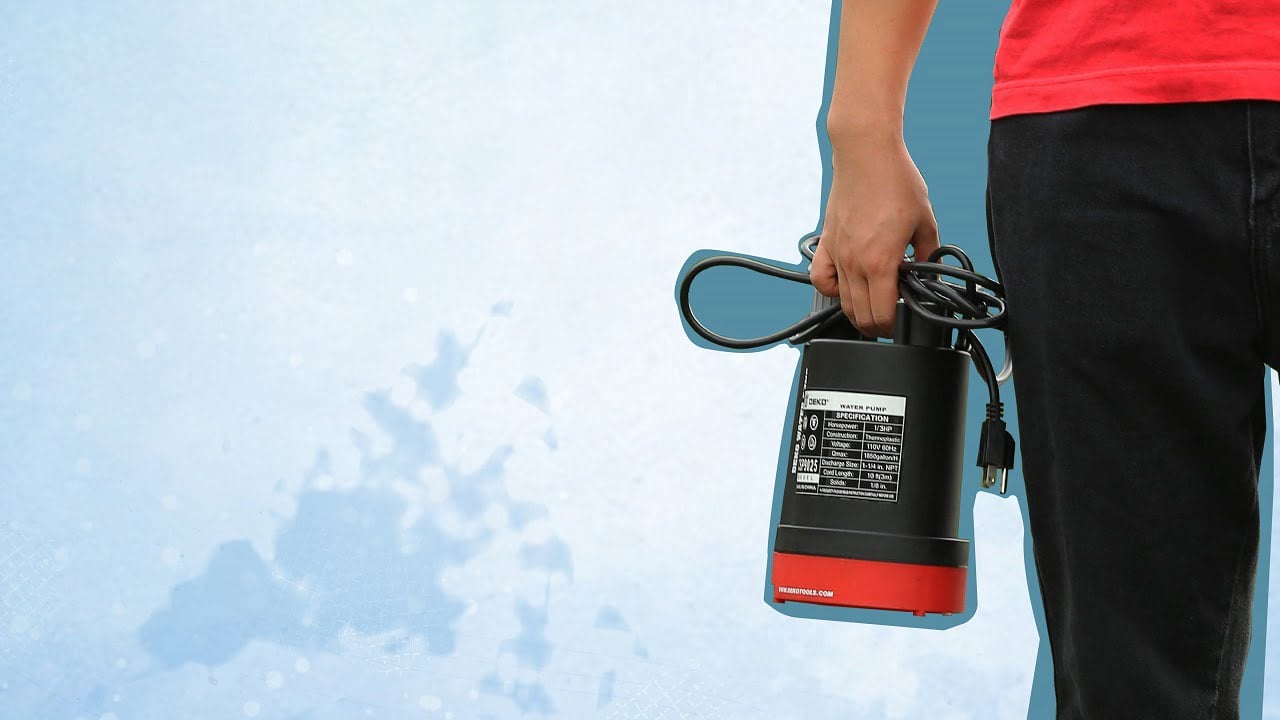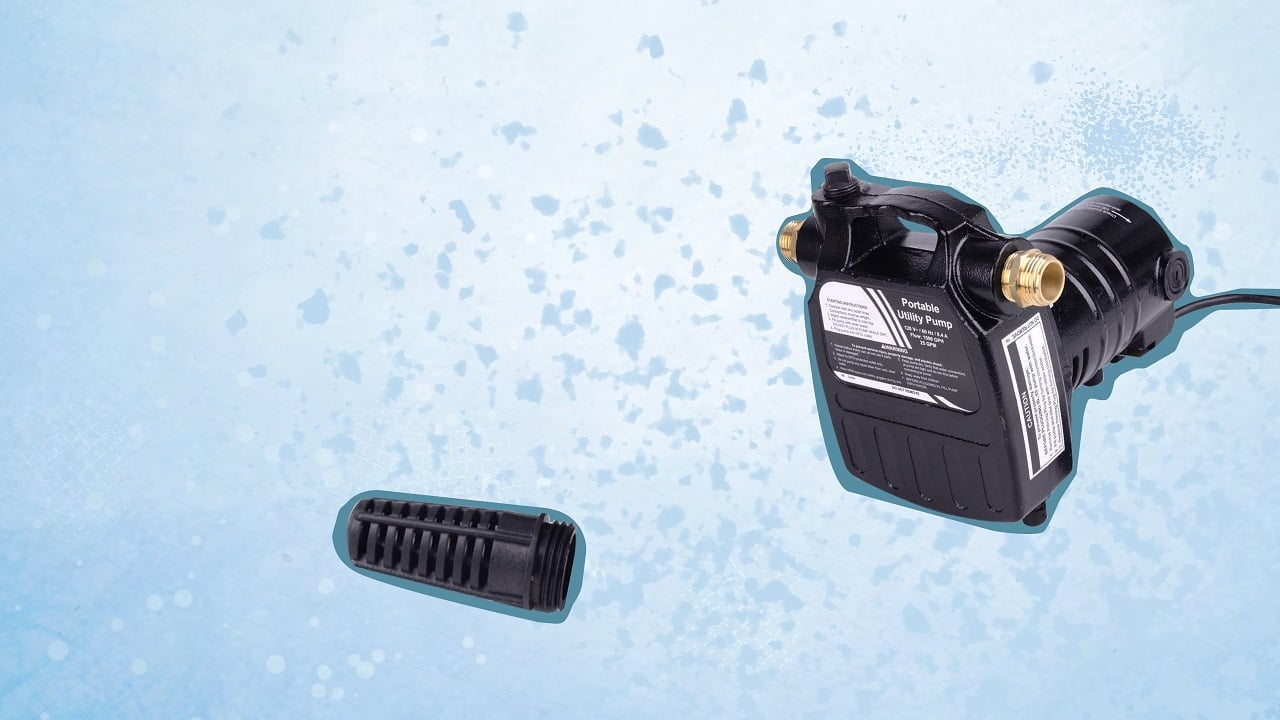Utility pumps are multipurpose water pumps for removing standing water from swimming pools, basements, or aquariums. They are mostly available as gas-powered or electric units, having an intake hose and operating at a higher output than sump pumps.

A utility pump is essential for residential and commercial applications, with the best utility pumps helping resolve plumbing issues quickly. But to get the most out of a utility pump, it's important to know how they work, which is the purpose of my guide today.
In this article, I talk about the various water pumps on the market to show how do utility pumps works and how pumps are different and explain their mechanism.
What Are Utility Pumps?

Utility pumps are categorized under transfer pumps that move water quickly between two locations, such as for gardening applications. You can use these submersible pumps to irrigate the garden or lawn or drain excess water from washrooms and swimming pools.
The main advantage of utility pumps is their affordability, which is why they find use in large-scale plumbing projects and help drain standing water from a specific area. Now, the basic principle behind how these pumps work is the same despite the different models…but more on that in the next section.
How Do Utility Pumps Work?
Utility pumps are connected to big tanks while the hose is connected to the drain, which makes it easier to pump water from the tank into the drain. But for more high-end models, the cost of operations is high, and you might need specialized skills to use it.
The main purpose of utility pumps is that they are great for repairing purposes and prove useful for fixing leaks, preventing fires, and replacing burst pipes. To understand how utility pumps work, I have listed the top submersible pumps below, along with utility pumps powered by gas and electricity.
A. Submersible Utility Pumps
Thanks to their greater portability, a submersible pump helps remove standing water, fix drain wells, or empty clogged sinks. These submersible pumps fit even in tight spots, like crawl spaces or window wells, and remove standing water by pumping it outside.
But the speed at which such utility pumps operate depends on the inlet size, which determines whether it is suitable for quickly moving large amounts of water. Also, you can use submersible pumps equipped with a float switch since they automatically turn the unit off/on when the water level changes.
The only thing to remember is that the water must not contain solid items because it will cause utility pumps to malfunction. This is why they aren't used for sewage cleaning purposes.
B. Utility Pumps With A Power Source
Based on the type of task, several utility pumps run on a power source to remove water.
1. Direct Current
A direct current utility pump is predominantly used in boats for pumping water from the bilge. Although they are available in multiple sizes, the power supply varies between 12 and 24 volts.
2. Alternating Current
The utility pump found in your home possibly runs on a 120V AC and comes in handy to discharge water from swimming pools, draining ponds, or de-watering low spots. But you should be careful about electric shocks when using these utility pumps, so always plug them into a GFCI outlet.
3. Gasoline Pump
A gasoline-powered utility pump is more powerful than a portable pump and removes 4 times the amount of water than many utility pumps. That's why they are used for commercial purposes and even pass small solids due to their large discharge hoses and reinforced solids.
To use these water pumps for removing water, place the unit close to the water body before attaching the suction hose, discharge hose, and suction lines. I also recommend attaching a check valve and suction strainer when the water contains a lot of debris.
The trick is to ensure that the various hoses or pipes are straight and short to pull water effectively. Then add high-quality fuel and fill the priming port of the pump with water prior to starting the engine.
4. Hydraulic Utility Pump
A hydraulic utility pump proves useful in areas where electricity is unavailable, so you use the hydraulic take-off from a tractor or vehicle for removing water.
5. Transfer Pump
A transfer pump can be gasoline or electric-powered and help resolve drainage issues by moving water from one location to the next. But for this utility pump to deliver the best results, I suggest attaching a foot valve accessory for filtering debris while placing the pump on a sturdy foundation.
After that, install the discharge pipe and suction hose to the pump before attaching a garden hose adapter. Ensure all the connections are secure and direct the discharge hose away from the pump before turning it on.
What Are Sump Pumps?
There is another type of pump known as a sump pump which is also quite popular for residential purposes, especially to prevent flooding. In this section, I will provide an overview of a sump pump which usually lies below the ground level and runs on electricity.
The primary purpose of a sump pump is to prevent water levels from increasing beyond safe limits inside your home. You can keep these pumps in the basement while connecting them to the drainage system to expel water using the drain pipe and a large piston.
They are mostly of two types - surface pumps and submersible pumps, with the latter proving useful in winter regions prone to torrential downpours.
A common type of submersible sump pump is the trash pump, especially useful when the water contains debris like sand or leaves, rendering a utility pump ineffective. All you need to do is attach the hose and place it away from the pump to remove water from basements.
These sump pumps have a high-quality impeller that uses centrifugal force to push water out through the large outlet, inlet, or hose along with the debris. They are, however, costlier than a utility pump, but the additional expense is worth it to remove dirty water.
The best part is that you can use a sump pump continuously for greater efficiency in removing water.
Difference Between A Sump Pump And Utility Pump
At this point, you might want to know what is the difference between sump pump and utility pump, so I have narrowed down the important points.
The basic difference between a sump and a utility pump is a sump pump can prevent flooding in the basement to keep you safe. But for all other water-related issues, it would be best to use a utility pump, given their affordability.
Thanks to its small size and multiple outlets, you can place a utility pump anywhere around the house. This means instead of one hose expelling high water pressure, there are several outlets to make the task easier.
I believe that a utility pump has more use in a residential space and is easier to install while being more energy-efficient.
In comparison, sump pumps can be used in homes and commercial spaces like construction sites, but they are more challenging to install due to their larger size. It would be best to install sump pumps beneath the foundation of a home or office space for the best results.
But sump pumps are suitable for heavy-duty tasks, such as extracting water from sump pits that are several feet high. They are also more reliable and can quickly remove water from a large area.

How Do Utility Pumps Work Conclusion
It makes sense to have a utility pump at home, considering you can't use it interchangeably with transfer pumps or sump pumps.
These low-cost units are ideal for upgrading your home through DIY means while ensuring your family's safety. Since it's not easy to constantly watch the pump, you can opt for electric-powered units with an auto shut-off function.
So, whenever the water heater or other in-house appliances malfunction leading to plumbing issues, use the utility pump to resolve the problems quickly. And if you liked reading this guide, check out another article where I answer the question - do you need a permit for a retractable awning?
Tip
Despite submersible utility pumps being available on the market they can't tackle water more than a few feet deep. You can use sump pumps in such situations to pump out flood water or for more deep-seated applications.
